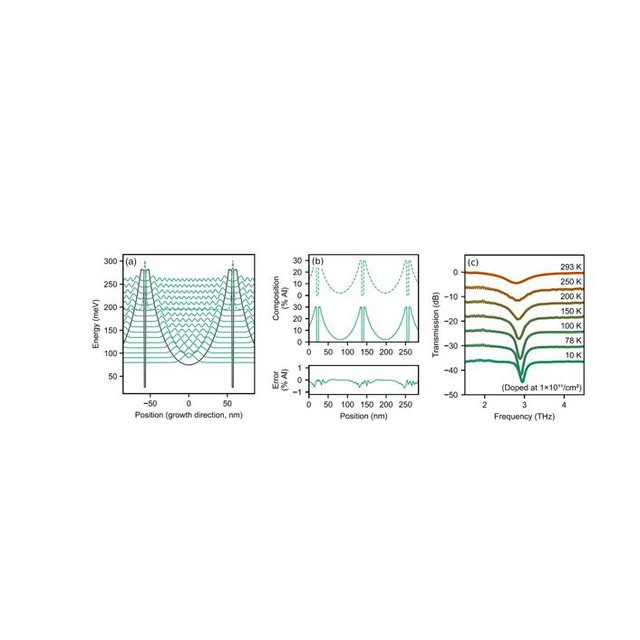Scientists mimic the properties of harmonic oscillators with semiconductors and demonstrate unprecedented room temperature THz absorption
The harmonic oscillator is a foundational concept in physics. Pendulums, vibrational modes in molecules, resonant electrical circuits, and many other systems can be modeled as harmonic oscillators. With such wide-ranging usage, implementing harmonic oscillators in the real world—as faithfully as possible—remains a compelling challenge.
To implement a harmonic oscillator, it is necessary to shape the energy potential of the system as a parabola. In semiconductor systems, where the potential is normally governed by the crystal lattice, it is challenging to tailor it while maintaining a very high material quality.
Using an innovative epitaxial growth technique, an international team including researchers at Waterloo University (Canada) and C2N (France) demonstrated arrays of harmonic oscillators in a semiconductor platform by faithfully implementing true parabolic potentials with semiconductor quantum wells. Their result has been published in the journal Physical Review Letters.
Such demonstration is particularly relevant for THz physics and technology. THz optoelectronic devices, both emitters and detectors, are the subject of intense research in view of applications in communications, medicine, security, and fundamental science. However, temperature in general negatively affects their performance and operation is only possible at cryogenic temperatures.
One peculiar property of harmonic potentials, when used to confine electrons, is their robustness against temperature fluctuations: in essence, they can operate at higher temperatures. This is exactly what the collaboration demonstrated: a system that shows robust harmonic oscillator behavior at a frequency of 3 THz, up to room temperature. Furthermore, the oscillation frequency is largely independent of doping and temperature.
These very high-quality harmonic potentials made of semiconductors open up several new vistas for THz and sub-THz science and technology.
Figure 1: (a) Simulated parabolic energy potential and its confined equidistant wavefunctions. (b) Targeted and realized parabolic potentials measured composition. Bottom: difference between the two curves: they are closely identical. (c) THz absorption of a typical sample as a function of temperature. Solid lines show the measured transmission spectra, and dotted lines show the empirical fit. Operation up to room temperature (293 K) is achieved.
Reference:
C. Deimert, P. Goulain, J.-M. Manceau, W. Pasek, T. Yoon, A. Bousseksou, N. Y. Kim, R. Colombelli, and Z. R. Wasilewski, "Realization of Harmonic Oscillator Arrays with Graded Semiconductor Quantum Wells," Phys. Rev. Lett. 125(9), 097403 (2020).
Published in Physical Review Letters
https://journals.aps.org/prl/abstract/10.1103/PhysRevLett.125.097403
Contact C2N:
Raffaele Colombelli / raffaele.colombelli@c2n.upsaclay.fr









